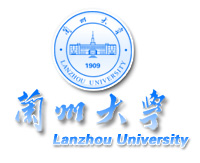 Make complex operations on your scientific workflows tractable
Make complex operations on your scientific workflows tractable
Bioinformatics experiments are usually represented using scientific workflows in which tasks are chained together forming very intricate and nested graph structures. In the meantime, the number of tools available to guide users in the design and execution of workflows has increased a lot. Such tools all perform intrinsically complex operations on workflow graphs making them difficult to use on intricate structures. While scientific workflows systems deal with general graph workflows (DAGs), several tools for workflow management have chosen to impose restrictions, namely considering series-parallel (SP) graphs to gain both in efficiency and usability. There is thus a crucial need to provide systems able to transform any DAG workflow into an SP workflow while preserving the meaning of the original workflow: This is the goal of the SPFlow approach that we demonstrate here..
Here, we introduce a java application tool named SPFlow which aims at rewriting a non SP workflow into an SP workflow while preserving provenance. Please click here to see the video demo.
The SPFlow System is used to rewrite a non SP workflow into an SP workflow while preserving provenance. If you would like to check whether or not the workflow obtained is already a SP workflow, you can use another tool SPChecker.
 Check whether or not a Taverna 2 workflow is an SP
workflow.
Check whether or not a Taverna 2 workflow is an SP
workflow.
 Transform any Non-SP workflow into an SP workflow.
Transform any Non-SP workflow into an SP workflow.
 Visualize the provenance information by using the provenance model
[1].
Visualize the provenance information by using the provenance model
[1].
 Export Taverna 2 files into ZoomUserView files
(current version supports Taverna 2 and ZoomUserView).
Export Taverna 2 files into ZoomUserView files
(current version supports Taverna 2 and ZoomUserView).
related Publictions
[1] Scientific Workflow Rewriting while Preserving Provenance (Sarah Cohen-Boulakia, Christine Froidevaux, Jiuqiang Chen) In Proc. of the 8th IEEE International Conference in eScience, 2012.

